The world is home to an infinite number of distinct chicken breeds, from the ordinary and cheap ones to the most expensive chicken breeds. Some are raising certain breeds to lay many eggs; some are for cockfighting, while others are grown primarily for their meat. Rarely, you’ll come across a chicken breed that was developed solely for show or pet interests only.
The majority of chicken breeds are very cheap. For example, most chickens cost between $1 and $5 when purchased as chicks, while young hens cost between $15 and $25. Yet, there are a few labeled as the most expensive chicken breeds. Typically, these are the rarest breeds or those that must be imported.
What are the most expensive chicken breeds?
Except for fighting cocks, the free-range and show or pet chicken categories catch up in terms of the value of chicks and growers. In many parts of the world, an increasing number of individuals are getting fascinated by raising uncommon varieties of imported chicken, including the most expensive chicken breeds. As demand grows, so is the price.
Prepare your savings because this article will discuss the 15 most expensive chicken breeds and why they demand a high premium.
15. Chinese Silkie
Temperament: docile, easy to handle
Maintenance: low
Lifespan: 9 years
Price: $20 up to $120 each
Chinese Silkies are said to have arisen in Asia. Still, it is unknown whether they originated either in China or Japan or in any other part of Asia, despite its title. Marco Polo is recognized for introducing this fowl to western society, among his numerous other accomplishments.
Just a single glance at this chicken, it’s easy to understand how it earned its name. This soft-feathered chicken appears very different from the majority of other chickens.
Because the Silkie’s feathers lack barbs that would typically keep the strands intact, the individual strands hang freely. Each one of these strands measures about 50 to 75 millimeters in length and imparts a smooth, silky look to the bird.
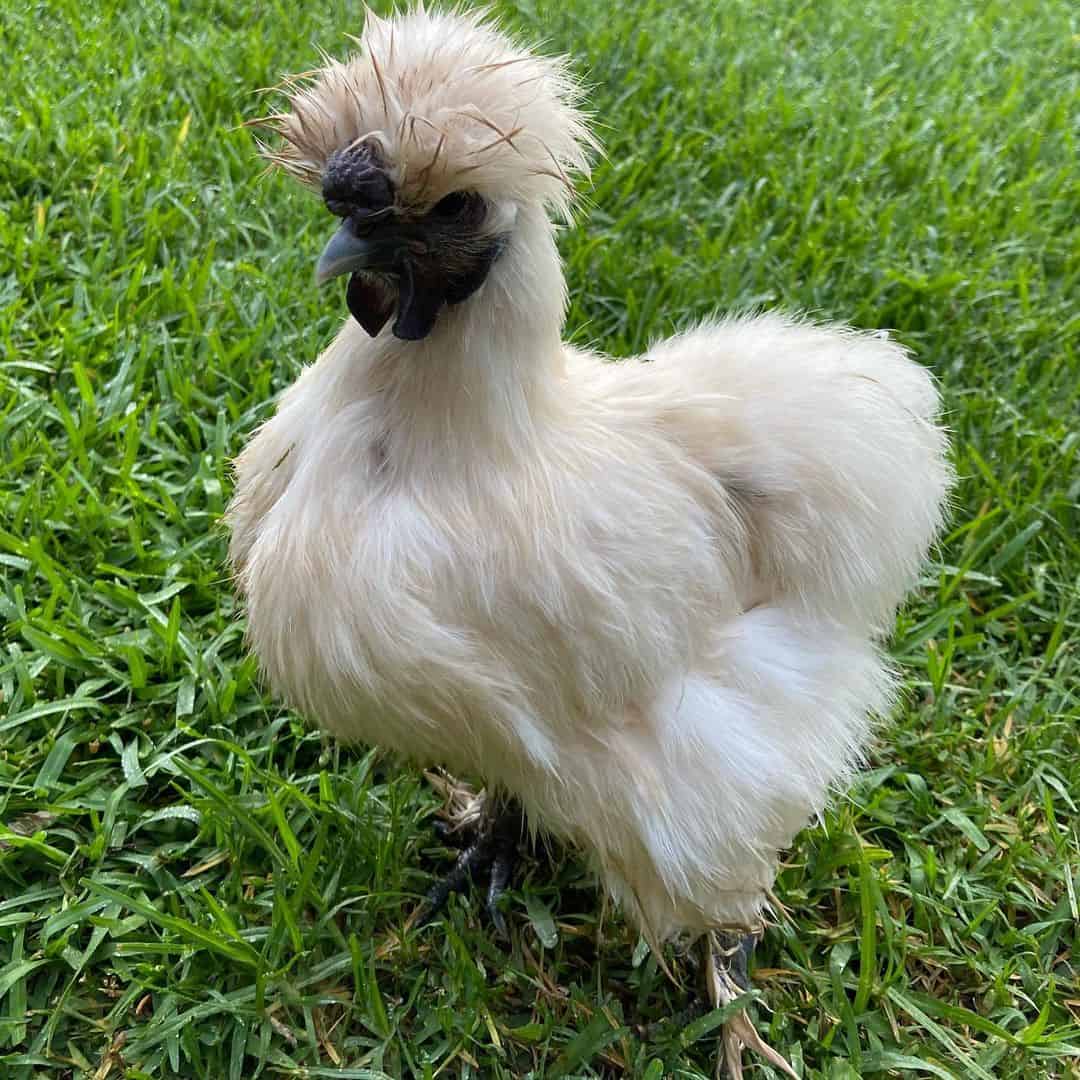
The Chinese Silkie comes in two varieties: unbearded and bearded, and there are also distinctions among males and females. Silkies without beards have big wattles (a soft spongy appendage) about 25 to 40 millimeters in length underneath their beak.
Yet, the wattles of the hen are considerably smaller than those of the cock. Male and female Bearded Silkies have very tiny wattles (about 5 millimeters in length) and, as the name implies, a thick, fluffy, feathery beard flares up around its face.
Both unbearded and bearded Silkies have a fluffy crest like a makeup brush and meaty combs on top of their head. The comb of a cock is much bigger than that of hens. But, the comb does not resemble that of other kinds of chicken.

A Silkie’s comb (also known as a rose or cushion comb) looks like a wart-like bump on the chicken’s forehead, instead of the jagged appendage one might expect. Ears are also embellished with striking blue lobes. Silkies are distinguished from other chickens by their five toes and dark flesh.
Normal Silkies are medium-sized birds that weigh between 1.5 and 2 kilograms. Cocks are much bigger than hens. Smaller chickens (referred to as bantams), such as the Pekin bantam, may weigh as low as 500 grams, while more giant birds, like the Dorking, can weigh up to 6 kilograms.
Along with the normal Silkie, breeders produced the bantam Silkie, which was exhibited for the first time in Australia in 2000 at the Sydney Royal Easter Show.
14. Swedish Black (Svart Hona)
Temperament: docile
Maintenance: low
Lifespan: 5 years
Price: up to $100 each
The Swedish Black Hen (Svart Hona) has almost the same features as Indonesia’s most prized chicken breed, the Ayam Cemani. That really is; nearly every physical aspect of the Swedish Black Hen, both outside and inside, is the purest black hue.
While some claim to detect distinctions between the Ayam Cemani and the Swedish Black Hens, the Ayam Cemani is alleged to have a more gamefowl-like body type. The external differences are minor and can only be examined by a comprehensively skilled eye. Despite these outward similarities, the Swedish Black Hen has a very distinct history.
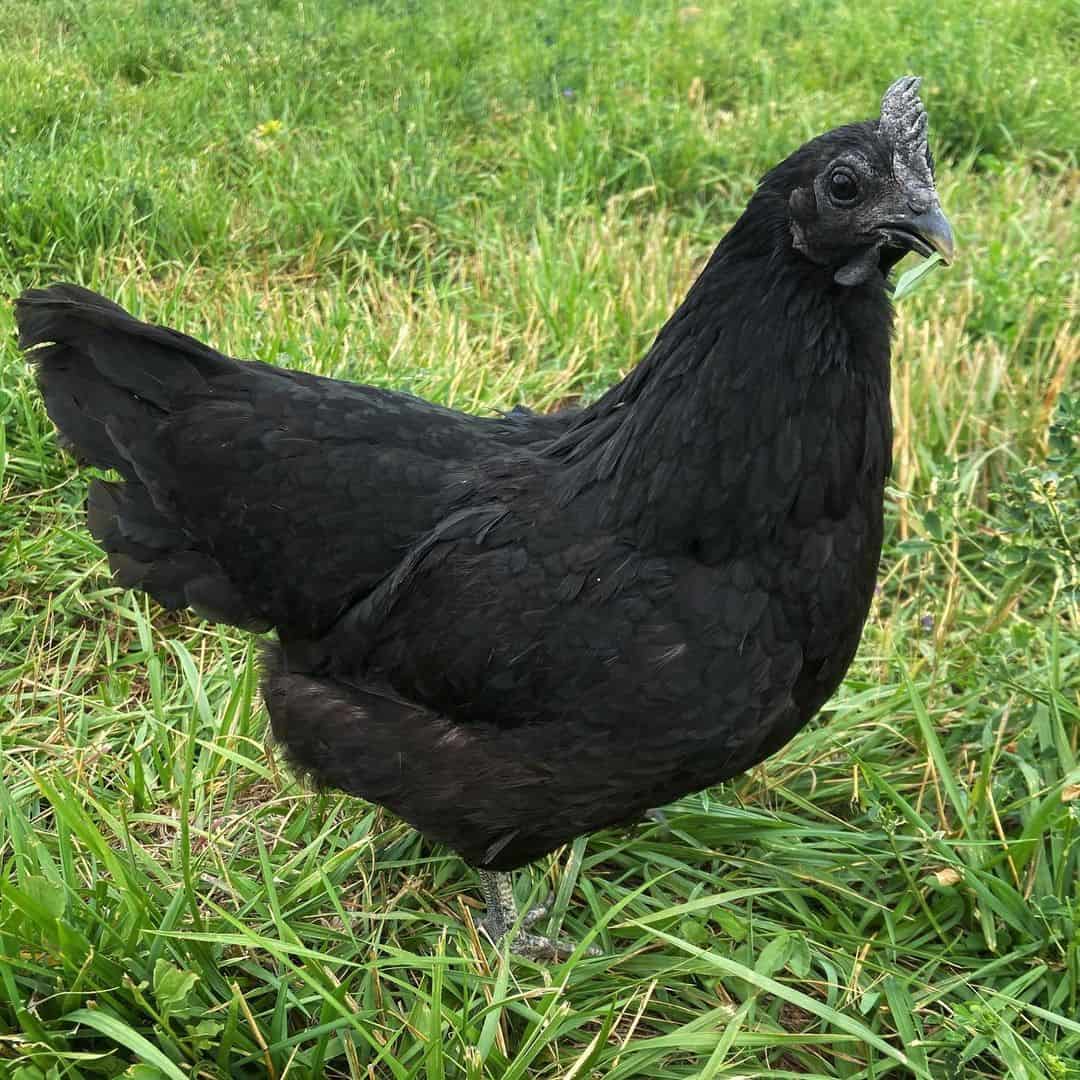
She has evolved to a much colder environment than the Ayam Cemani throughout the ages. Additionally, Swedish Black Hens are more uncommon than Ayam Cemani. In Sweden, a national poultry census revealed that there are less than 500 Swedish Black Hens only.
The mutation that induces fibromatosis results from a mutation that occurred around 800 years earlier in Asia. The gene increases the growth of cells that produce black pigment. A similar mutation may have been carried into chickens brought to Norway 400 years ago. (Norway and nearby Sweden have a complicated and often violent history; rest assured that Norway was briefly a state inside Sweden until gaining independence in 1905.)
On what is now the Sweden-Norway border, a landrace of rare blackbirds thrived. What began as a tropical transplant to this freezing area ultimately adapted to the colder environment. According to some sources, Swedish Black Hens arrived in the Nordic countries through sailors traveling from Mozambique in the 1800s, but explanations vary and are often unclear.

What is known is that Swedish Black Hens are petite and sleek – the roosters weigh around 4 pounds. – With a pleasant, laid-back disposition. White or cream-colored eggs are laid by the hens. Typically, the birds are almost all black, but some have rich mulberry red facial skin. Feathers may be iridescent in hues of green and purple.
These birds are skilled foragers who represent their ancestors’ hundreds of years of free-range existence. According to a Swedish poultry keeper, Black Hens are well-known for their resistance to frostbite on their combs. Our Swedish Black Hens have successfully roosted in the open on windy nights as low as 20°F. Despite its rarity, this landrace is affirmed to be robust and simple to grow.
13. Sussex
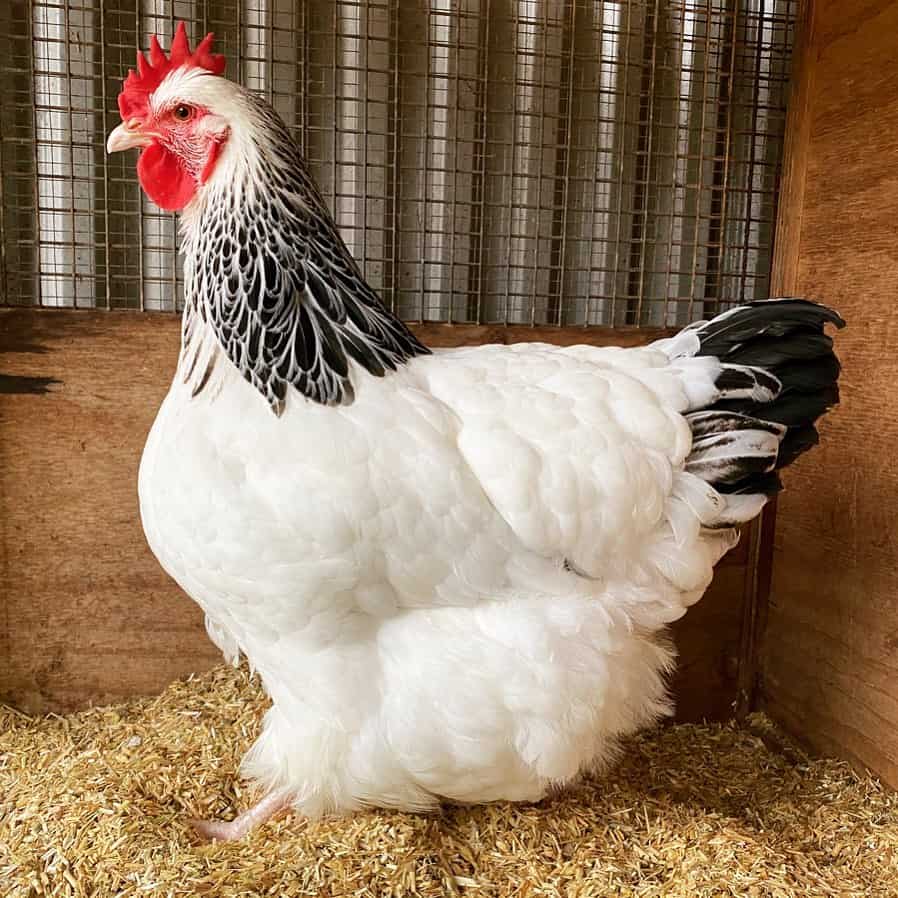
Temperament: docile, non-aggressive
Maintenance: low
Lifespan: 8+ years
Price: $3 up to $30 per chick / $100 up to $160 per pair
The Sussex Chicken is indeed an ancient and much-loved English chicken breed. They have existed for over a thousand ages! Nowadays, this breed is a gentle backyard chicken that is ideal for households seeking an egg layer. They come in eight distinct color variations, but the speckled is by far the most common.
The Sussex chicken is one of the various ancient breeds known to man. Their ancestors may be tracked all the way back to Roman Britain, about 2000 years ago!
These hens stayed in Britain and were among the most recognized breeds throughout World War II. Unfortunately, when industrial farming grew more prevalent, Sussex chickens lost appeal due to their inability to compete with their modern relatives (Isa Browns chicken).
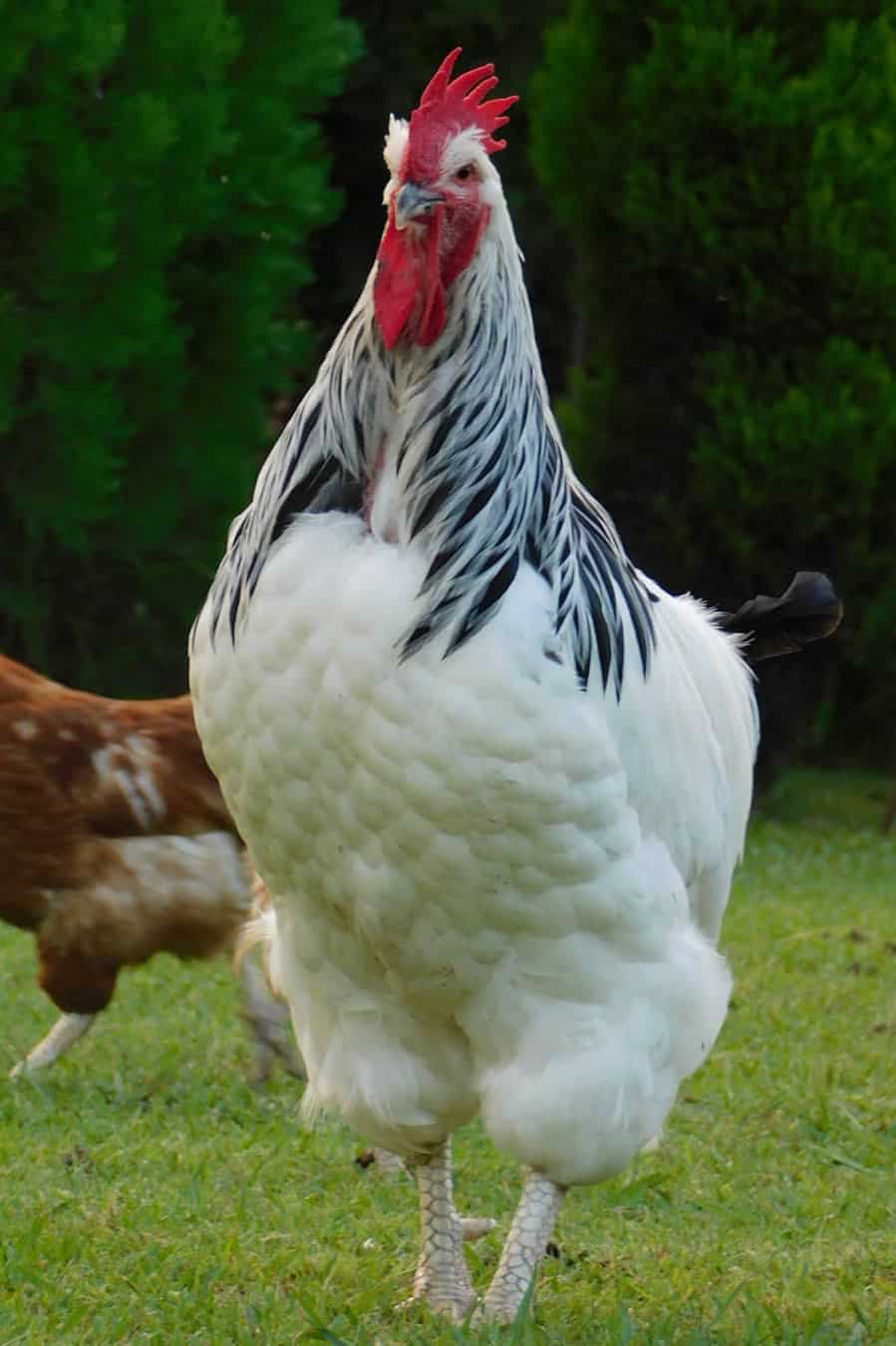
Luckily, the Sussex Chicken did not really go out of favor, and a tiny but devoted group of chicken aficionados ensured the Sussex’s continued existence. However, sadly, certain types remain scarce to this day. This chicken is the ideal family fowl; it is gentle and loving toward both owners and children.
They are well-suited to tiny flock numbers and are an excellent choice for little farms and backyard businesses. In addition, they are ideal for newbies seeking a low-maintenance chicken capable of producing a large number of eggs.
This breed is large and serves two purposes. First, their bodies are rectangular in appearance with large shoulders and a long broad back; they feature a five-pointed comb in a beautiful deep red hue. Their tails are at nearly a 45-degree angle to their torso.
Their shanks are white and neat, and each foot has four toes. Second, expect hens to reach about 7pounds and roosters to be approximately 9pounds. If, on the other hand, you want to maintain Sussex Chickens but lack the necessary space, you might choose the Bantam Sussex; these variants weigh just between 2 to 4pounds.
12. Serama
Temperament: docile, friendly
Maintenance: medium
Lifespan: 7+ years
Price: $10 up to $15 per chick
Even though the Serama chicken is tiny, it has a tremendous character. Except this breed was granted to the American Poultry Association recently, they have rapidly developed a solid and devoted fanbase.
Yet, they have been a big favorite in their birthplace of Malaysia for many hundred years. These cheerful and lively tiny chickens will bring you smiles and company. In addition, they make endearingly affable musical partners (especially when kept indoors).
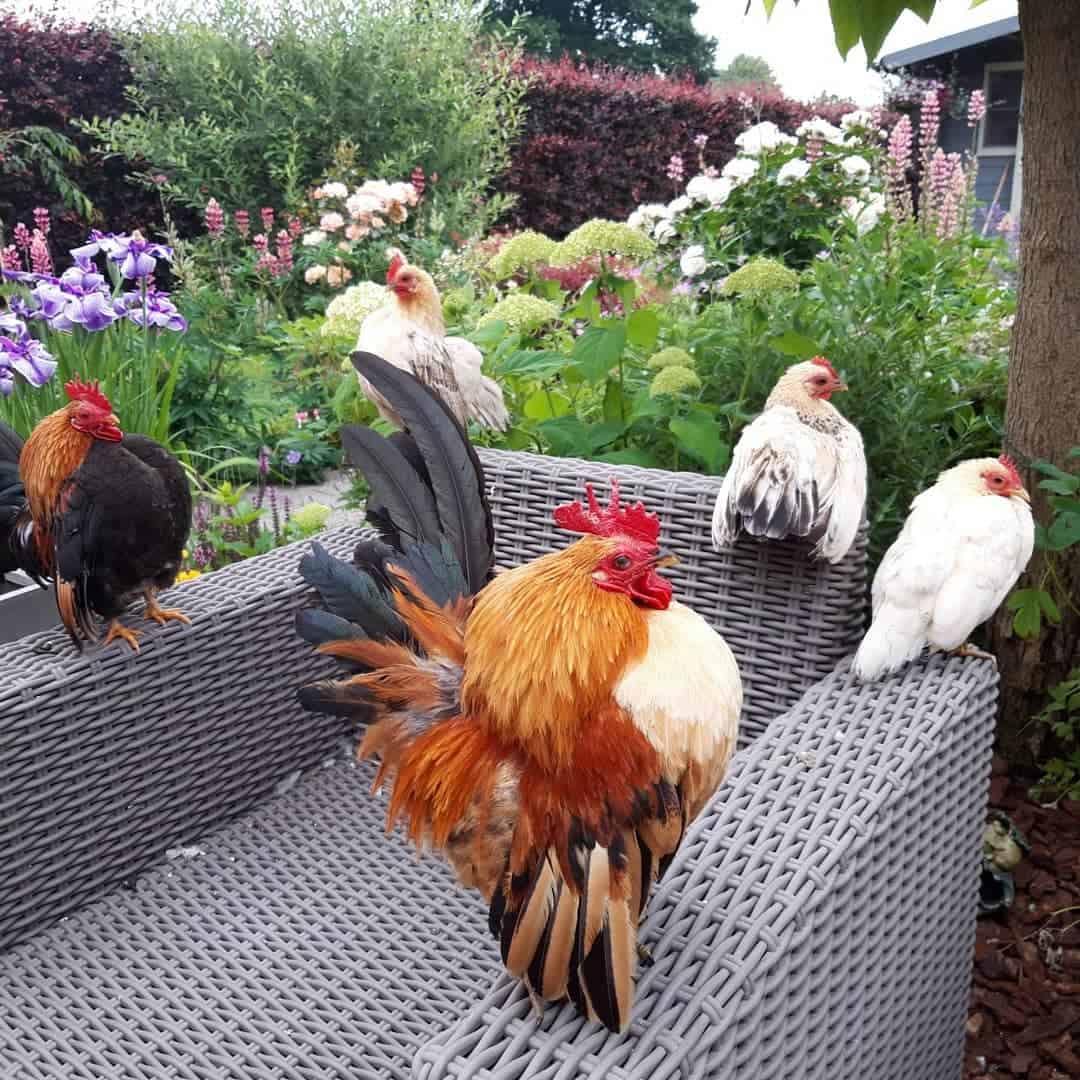
In the chicken world, the little Serama has a dedicated and loyal audience. Though they seem to be fierce, they are a gentle and friendly breed that will accept you as a member of their family. Many people keep these little chickens indoors in an aviary due to their inability to withstand chilly temperatures.
However, they may thrive in an outdoor aviary, as long as the temperature does not go below 40°F. Due to the minuscule size of their eggs, most individuals maintain them for decorative or display reasons.
They are, nevertheless, excellent egg layers and may make ideal moms if you want to experiment with hatching. Simply be aware that some of them are infertile, and the eggs may become challenging to hatch.
Also, due to their unique care needs (in terms of temperature and handling), they may provide a challenge to inexperienced keepers. Still, if you pay attention and do everything correctly, these adorable little birds will shower you with affection.
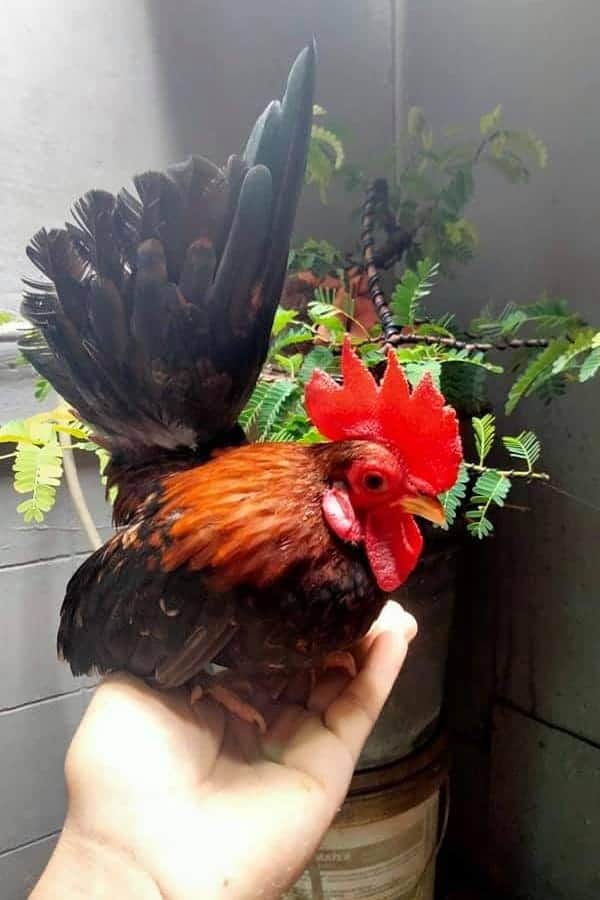
Seramas are little chickens that measure about 6 up to10 inches tall. They maintain a highly erect posture, their chests protruding, their heads held high, and their tail feathers standing at attention.
The bird’s back is very short, with practically no space between the neck and tail feathers. Their tail feathers are almost vertically attached to the body and extend upward over the skull. When held erect, the wings should nearly touch the ground on the side.
Their shoulders are musculature and positioned high to accommodate the wings. Their heads are very tiny, with a single comb and crimson earlobes. The eyes are bay red, and the beak is small yet big—clean, strong legs with golden shanks.
There are many color selections available, including black, white, and orange. However, since they are not raised for color, their color pallet may be very varied. Additionally, they may not reproduce accurately to colors.
11. Pavlovskaya
Temperament: social and sweet-natured
Maintenance: medium
Lifespan: 5 years
Price: starts at $20
The Pavlovskaya is categorized as an ornamental avian. It’s because of its extreme rarity not just in the United States but across the globe. Therefore, it is strongly advised that this very uncommon breed not be consumed.
Each year, they lay less than 100 white eggs. They are very gentle and appear to delight in human contact. It is a small energetic breed with a nearly horizontal posture, a long tail, a thick beard, and a breed-specific head. Their legs and toes are wrapped with feathers.
Their four toes are lightly feathered, and their plumage is thick and tight to their bodies. These chickens date back to the reign of Catherin II (1729 – 1796), the Russian Empire’s Empress. According to tradition, this breed’s forefathers were hens from Catherine II’s personal poultry yard.
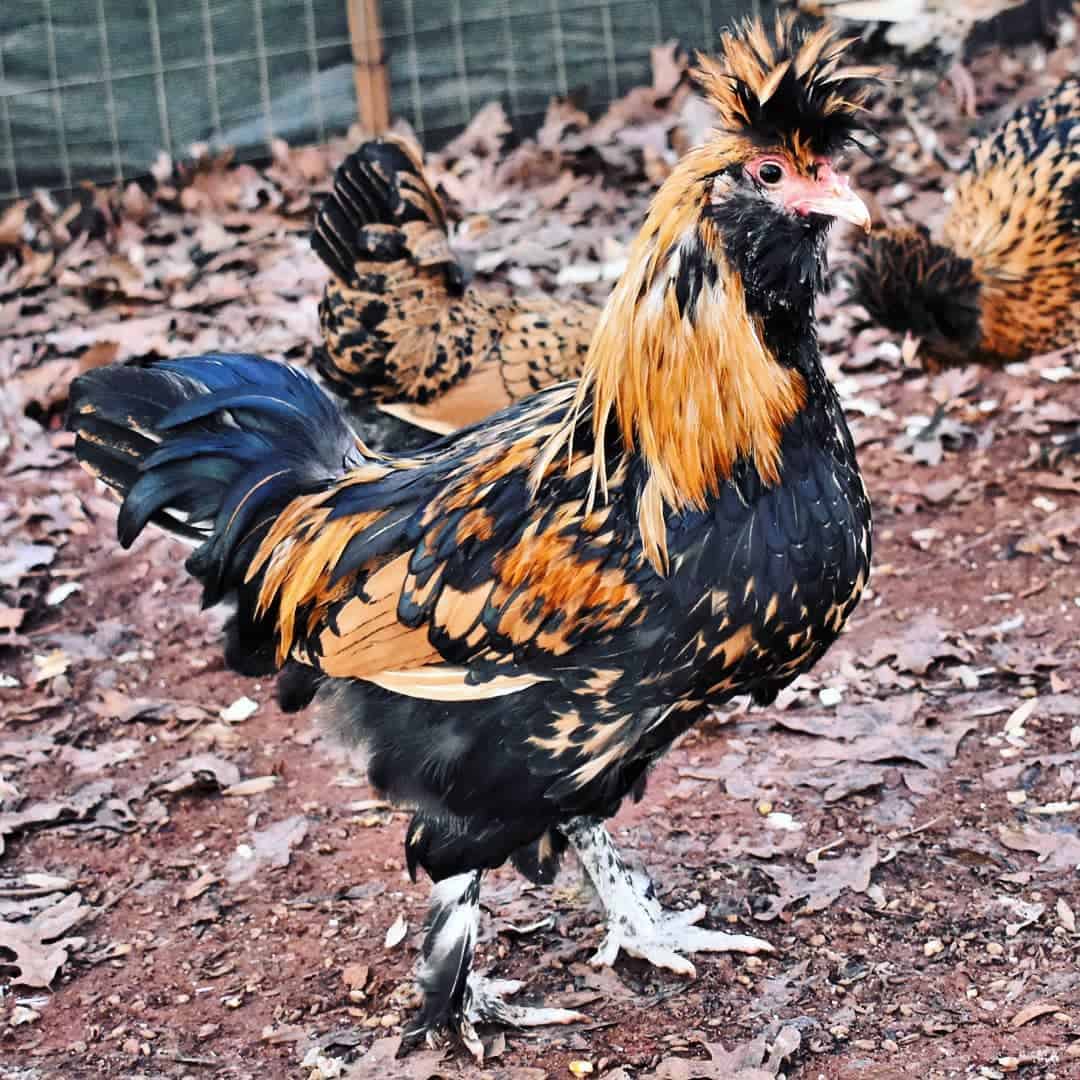
This breed developed into the world-famous Russian national breed. It was honored as the 18th century’s pinnacle of chicken beauty, but there is only a little documentation about it.
The 1906 Russian Agricultural and Commercial Poultry Exhibition included a presentation of six trios of this type. Golden and Silver Pavlovsk were displayed at the 1911 Turin International Poultry Exhibition, and their owners were granted gold medals.
At the end of the nineteenth century, the breed appeared very seldom at exhibits and eventually seemed to vanish altogether. Numerous experts believed that the popularity of new foreign species contributed to the Pavlov breed’s extinction.
However, this chicken breed’s gem has not escaped the ravages of time. The Pavlov breed was deemed to be extinct for an extended period, but breeders sought to reintroduce it.
Around the 1980s, poultry enthusiasts from various regions of the USSR began searching for heirs of the once-famous breed. The researchers looked at areas where the species could have been protected.
In 1991, the organization of hobby breeders of backyard poultry breeders held a meeting. They adopted a function program for clubs of rare and vanishing luxury chicken breeds searching for the Pavlov breed.

The standard was written, and all data about the breed was gathered. They collaborated with the Russian Scientific Research and Technology Institute of Poultry in Zagorsk and other scientific research institutions to reintroduce this breed.
Several breeders acquired mongrel chickens that had mated with Pavlov chickens. Unfortunately, the pure breed was not discovered. The project began with three cocks and five hens. As blueprints, historical materials and papers such as photographs, articles, and sketches were used. Additionally, they utilized a mounted specimen discovered in Moscow’s museums.
They found images on postcards issued in 1905 by the Russian Imperial Poultry Society. According to one expert, they possess DNA that no other crested breed has; their crests are flat on the sides, and they have unique feathered legs.
It is the primary indicator of Pavlovskaya’s distinction from other chickens. Chicken enthusiasts use words such as ‘Pavlov’s leg.’ This implies that the bird’s legs are feathery on both sides and that the feathers are so thick that the leg seems to be wearing a feather stocking.
10. Orust
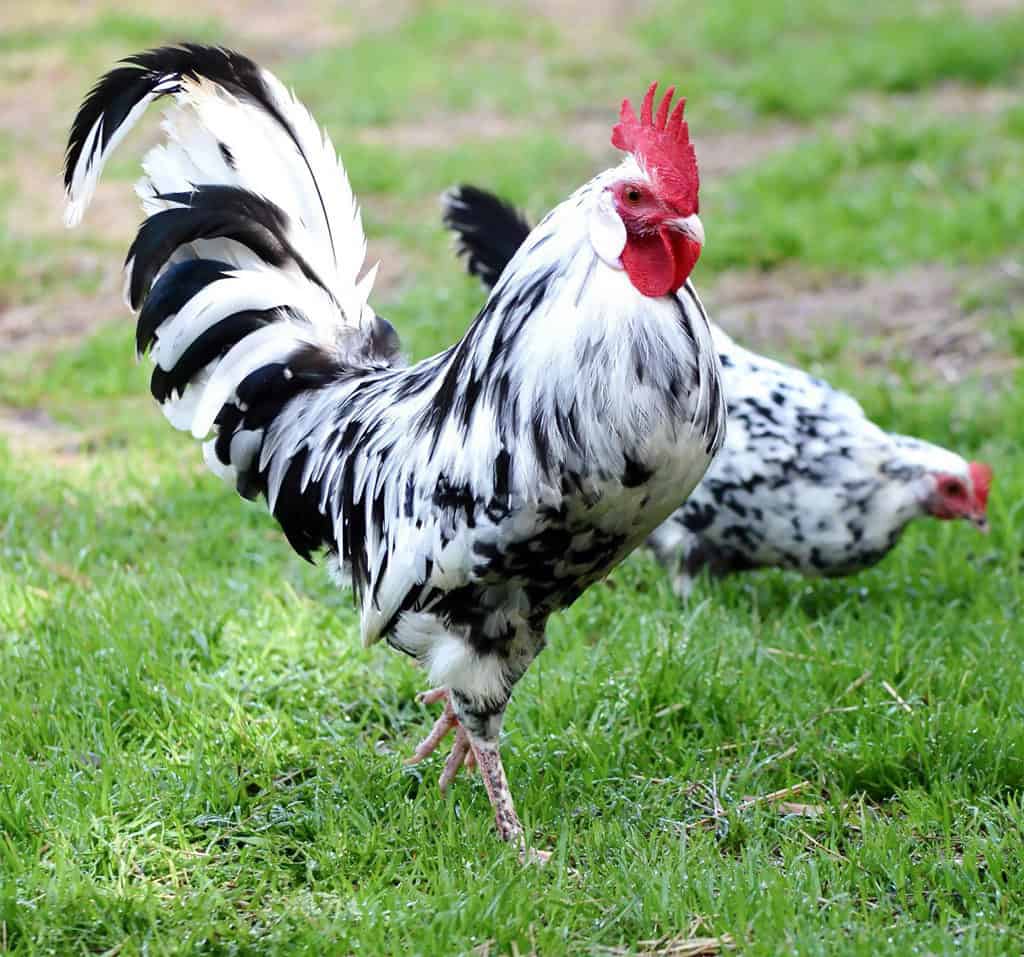
Temperament: docile
Maintenance: medium
Lifespan: 6 to 8 years
Price: $30 to $150 per bird
Orust chickens are an extremely uncommon and exotic breed that is incredibly difficult to find. There were literally less than 3000 of these birds on the planet in 2016!
However, one of the numerous extraordinary things about them is their stunning beauty. More so, their black and white speckled appearance – even their feet are also black and white spotted!
The Orust is a unique landrace of chicken that evolved on Sweden’s western coast. It survives by free-ranging around the rocky beaches of Orust island. Orust is so uncommon that even seasoned chicken specialists often are unaware of their existence. The Orust is a small to big, medium-sized chicken that has evolved to live on scavenging diverse food. For instance, it has been stated that they consume fish.
Its unusual appearance matches its exotic origins. It has an almost unequaled black and white mottled feather pattern, which often extends to a mosaic of black and white scales on its legs. The chicks, with their panda-like patches of black and white down, are equally stunning.

This breed is remarkably resilient. One unique trait is that the roosters’ wattles become a brilliant iridescent violet hue when they get upset, a condition that is often observed while protecting the hens. In addition, the chickens are prolific egg layers, producing white eggs ranging in size from small to larger.
As with various breeds on this list, the population fell to the point that the species was on the edge of extinction. Now, conservationists and breeders are working feverishly to reintroduce these magnificent birds to the gene pool and preserve them.
If you add an Orust to your herd, keep in mind that they are not just decorative. Orusts are outstanding egg layers, and their roosters fiercely protect their flocks. Another peculiarity of this uncommon breed is that when the roosters are stimulated, their wattles become an iridescent violet hue. The price of an Orust varies from hatchery to hatchery. However, you’re looking at a price range of $30 to $150 per bird.
9. Orpington
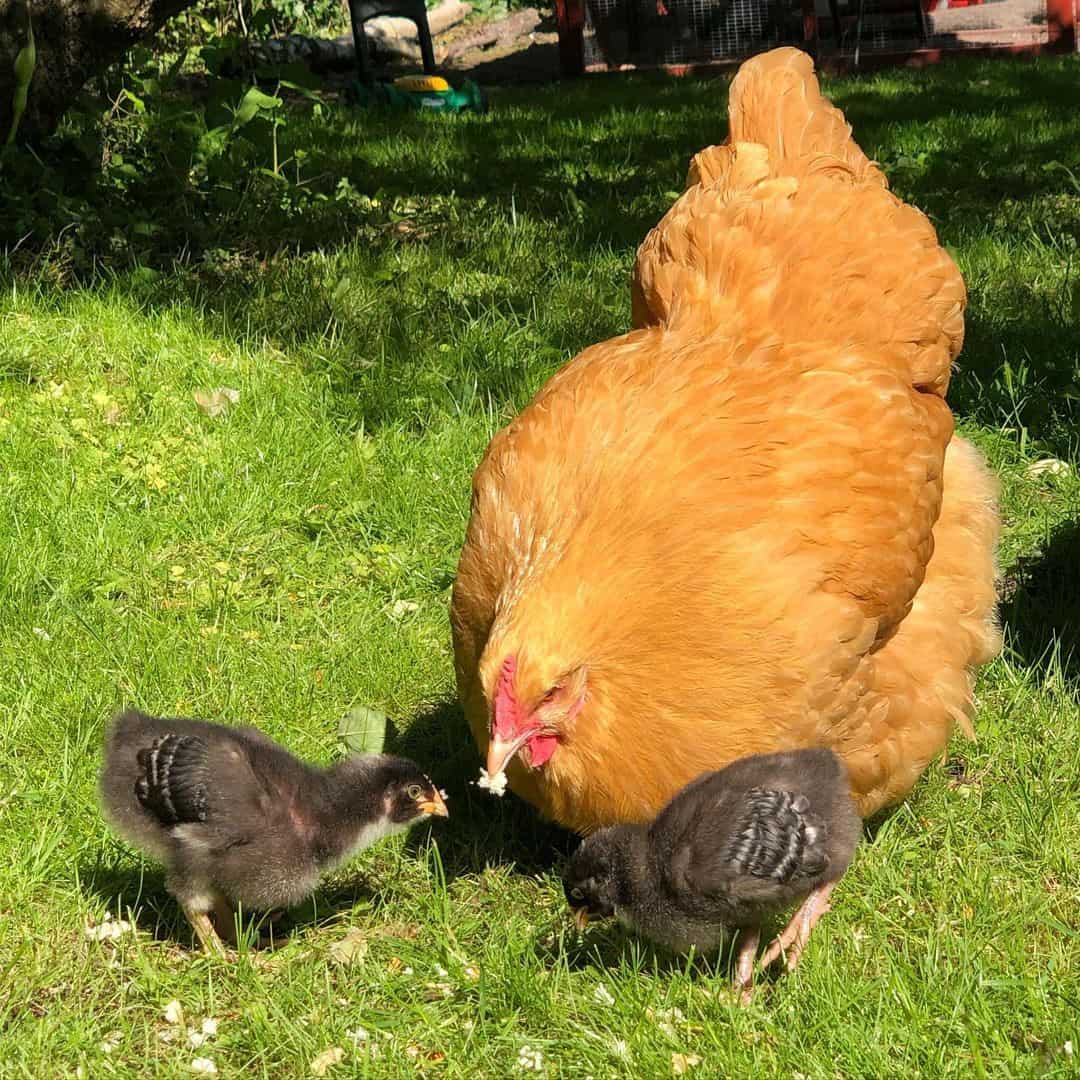
Temperament: docile, friendly
Maintenance: medium
Lifespan: 8+ years
Price: $5 to $35 per chick
Orpingtons are a kind of chicken found in England. This breed immediately became a celebrity upon its creation and has been a hit ever since. They are a joy to have and are very friendly with their caretakers. They are available in a variety of fascinating color schemes. However, the most common type is the Buff Orpington.
The Orpington Chicken has established itself as a true success story among chicken breeds. They were developed in the late 1800s by Mr. William Cook, who desired a versatile hen. They are calm and friendly hen. They are an excellent option if you have children since they are big, fluffy, and affectionate.
Orpingtons are also excellent egg layers, laying about 3-5 eggs each week. So if you’re searching for a loving, prolific, and thoroughly English hen, look no further!

Just a word of caution: you may buy both utilitarian and display strains. Exhibition strains are produced by purists seeking to create the ideal bird. In comparison, utilitarians prioritize egg-laying first and subsequently attractiveness.
Orpingtons are medium-sized chickens with a single upright comb. From the side, her figure is almost heart-shaped, with a curved dip in the middle. Her physique is wide and hefty, and she likes to walk low to the earth.
Regarding their feathers, they have an abundance! Although buff is the most common hue, there are many more recognized variations. Whatever the color of their feathers, they always have red wattles and ear lobes, as well as a short, deep amber-colored beak. Their leg color varies according to their feathers’ color, but the most frequent leg color is a pinkish white.
Although Orpingtons seem enormous (similar to the Jersey Giant), most of their appearance consists of feathers. Expect roosters to weigh about 10 pounds and hens to weigh approximately 8 pounds. Bantam variants often weigh between 3 and 3½ pounds.
8. Olandsk Dwarf
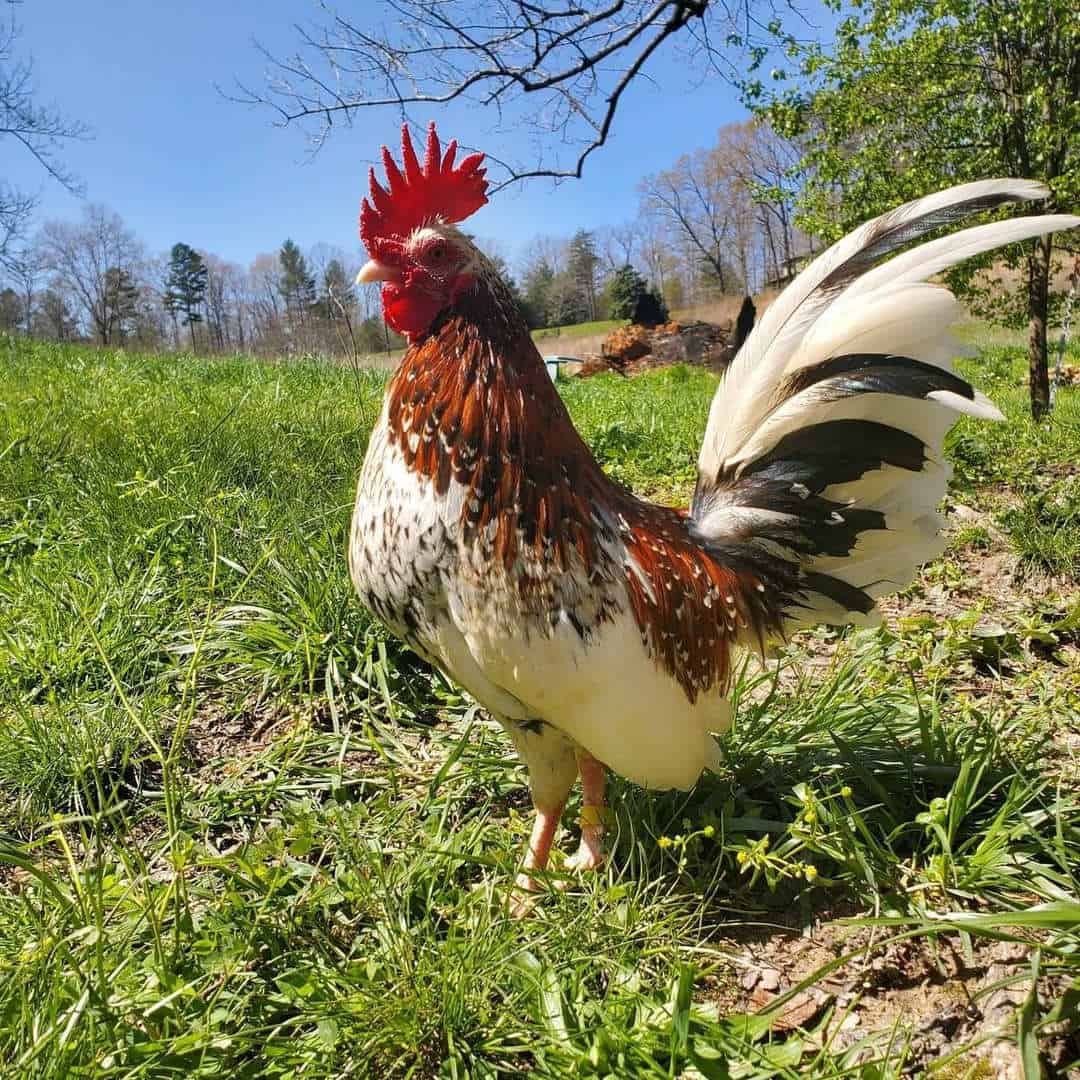
Temperament: docile, sociable
Maintenance: medium to high
Lifespan: 6+ years
Price: $25 to $115
The Olandsk Dwarfs are very uncommon, rarest of the rare! This chicken is stunning and very unusual tiny from the Swedish island of Oland. Three decades ago, just around 50 Olandsk Dwarf chickens were believed to exist.
They have made a comeback in recent years but remain very uncommon. These chickens are said by some to be not bantams but genuine dwarfs. They lack a big fowl equivalent. Their plumage is marked with black, ivory, red, orange, and brownish patches and streaks.
They are a landrace type, which means they were not produced to meet a particular standard. As a result, they exhibit a range of plumages. They are courageous tiny chickens who get along well with both bit of and giant birds.
Additionally, they are very friendly and can gladly feed off from human hands. The hens are excellent egg layer birds, producing tiny tan eggs with speckles. You will be astonished at how energetically they lay and how often they had the lovely dark orange yolks you like!
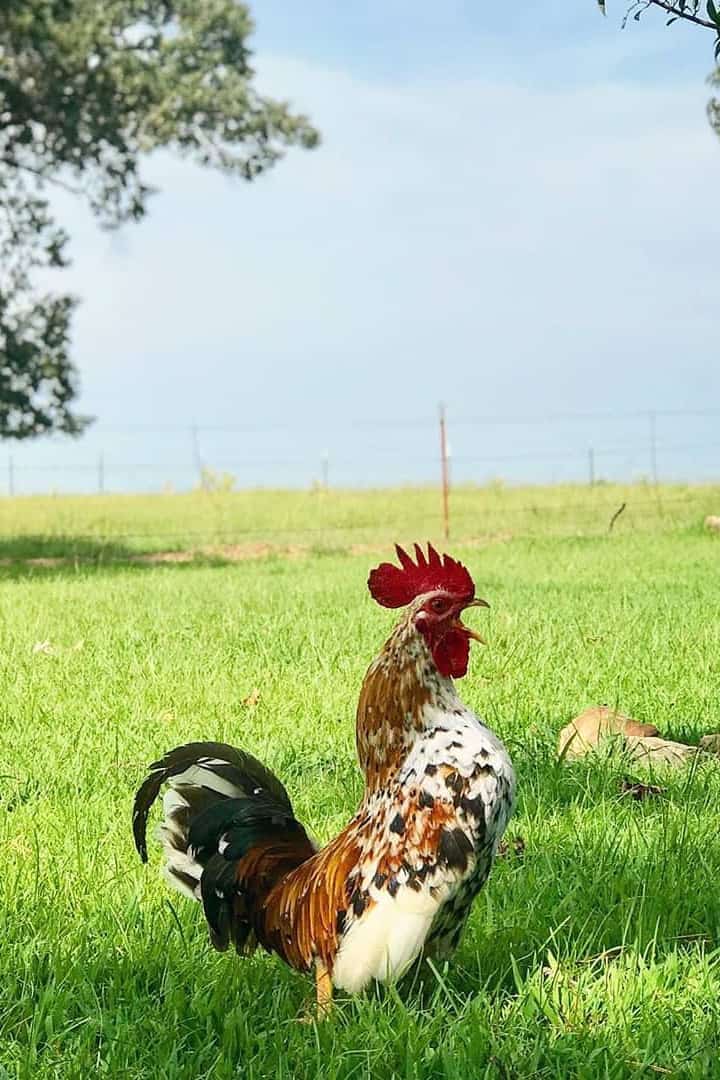
As one of the tiniest laying breeds, the Olandsk Dwarf is ideal for backyard enthusiasts. They naturally consume less food than full-sized hens. Smaller eggs appeal to people who like eggs but are trying to eat healthily – two Olandsk eggs placed sunny side up on a slice of bread look delightful!
The Olandsk Dwarf is a beautiful chicken breed that is typically gentle and sociable. Fanciers primarily maintain it for aesthetic reasons, but sometimes as a house pet. Unfortunately, the Olandsk Dwarf is now a critically endangered chicken species, which is why the Swedish conservation authorities have launched a rescue operation to save this historic breed from extinction.
When acquiring hatching eggs, keep in mind that this breed may be more challenging to hatch and quickly die if humidity levels are heaved drastically. Do not incubate them over 55% humidity during the lockdown and about 40% within the first phase of incubation; typically, do dry hatch them entirely.
7. Liege Fighter (Luikse Vechter)

Temperament: aggressive to predators yet friendly to their handlers
Maintenance: medium to high
Lifespan: 8+ years
Price: $100 to $150+
Even though this massive, muscular Belgian game fowl seems ferocious, Liege Fighters are usually amiable with humans. They may be an excellent option for the devoted enthusiast eager to explore the chicken kingdom’s extremities.
For centuries in Western Europe, game fowl lineages were meticulously picked to thrive and conquer in the harsh environment of the cockpit. Belgians developed their farmyard poultry to create an extensive and robust chicken breed — firstly named a Lombard’s rooster and subsequently dubbed a Bruges Game — that was equally adept at defeating an enemy or stuffing a roasting pan.
In eastern Belgium around the mid-to-late 18ht century, the Bruges Game was mixed with substantial Asiatic varieties (most likely Malay) to create the Liege Fighter or Luikse Vechter. The Liege Fighter is one of three extant Belgian gamefowl breeds; some are the Tirlemont and Burges.

The Liege Fighter was developed to battle with natural spikes (instead of the frequently observed sharpened steel gaffes). It was so big and strong that it could easily overpower any other fighting breed.
A variety of distinctive features distinguishes the Liege Fighter. It is enormous. Adult roosters may reach a height of 30 inches and weigh up to 12 pounds. They may grow to be double the size of domestic game birds in the United States.
Their physique is ruled by muscle, and they are an imposing breed. Their feet are enormous; they are the biggest ever seen in a chicken breed and massive as those of a turkey. The Liege Fighter’s feathers are exquisite, and its skin is often dark. They have a ferocious stare that is disguised by the large brow overhanging.
With their menacing look, these birds are very amicable with their human caretakers. However, pity the hawk who attempts to attack a hen when a Liege fighter rooster is watching. The hens are much smaller than the roosters and lay a vast quantity of whitish-colored eggs. If you’re searching for a jaw-dropping addition to your chicken coop, the Liege Fighter is perfect for it.
6. Kadaknath
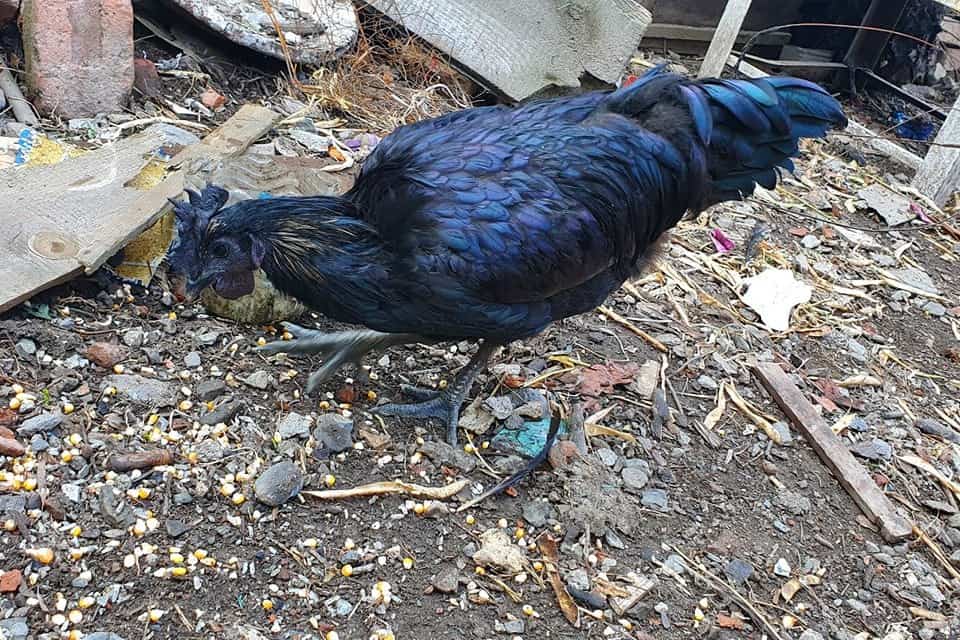
Temperament: docile
Maintenance: medium to high
Lifespan: 12 years
Price: $2500 per pair
Kadaknath is one of India’s most endangered chicken breeds, indigenous to Madhya Pradesh’s Jhabua region. Essentially, the Kadaknath breed is well-known for its black meat. The Kadaknath chicken breed is renowned for the fineness, thickness, and flavor of its flesh.
The demand for Kadaknath chicken is increasing daily. It has extended to the majority of Indian states due to its superior therapeutic properties. In particular, it has a high medicinal value in homeopathy and may be used to treat specific neurological conditions.
Generally, tribal people in Bhil and Bhilala in the districts of Jhabua and Dhar in the state of Madhya Pradesh raise Kadaknath chickens.
The new Kadaknath manufacturing technique has resulted in a 50% reduction in mortality. Now, you may anticipate a mortality rate of 10% to 12%, significantly increasing the survival rate and total earnings in Kadaknath chicken farming.
Due to their excellent feed conversion ratio, these birds may acquire 1.10 to 1.25 kg in body weight in 100 to 125 days. Kadaknath chickens may be grown in much the same way that country chickens or free-range chickens are.
However, it may need some additional care during the early stages of growth in a regulated environment. They may then be allowed to roam freely in an open field. These birds may be grown in backyards. Indeed, Kadaknath chickens are better suited to backyard farming than to commercial production.
The Kadaknath is an Indian chicken breed indigenous to Madhya Pradesh, where it is regarded as “Kali Masi” (meaning “black fleshed fowl”). As with the Indonesian Ayam Cemani, this chicken breed has dark skin and dark internal organs, meats, and bones.
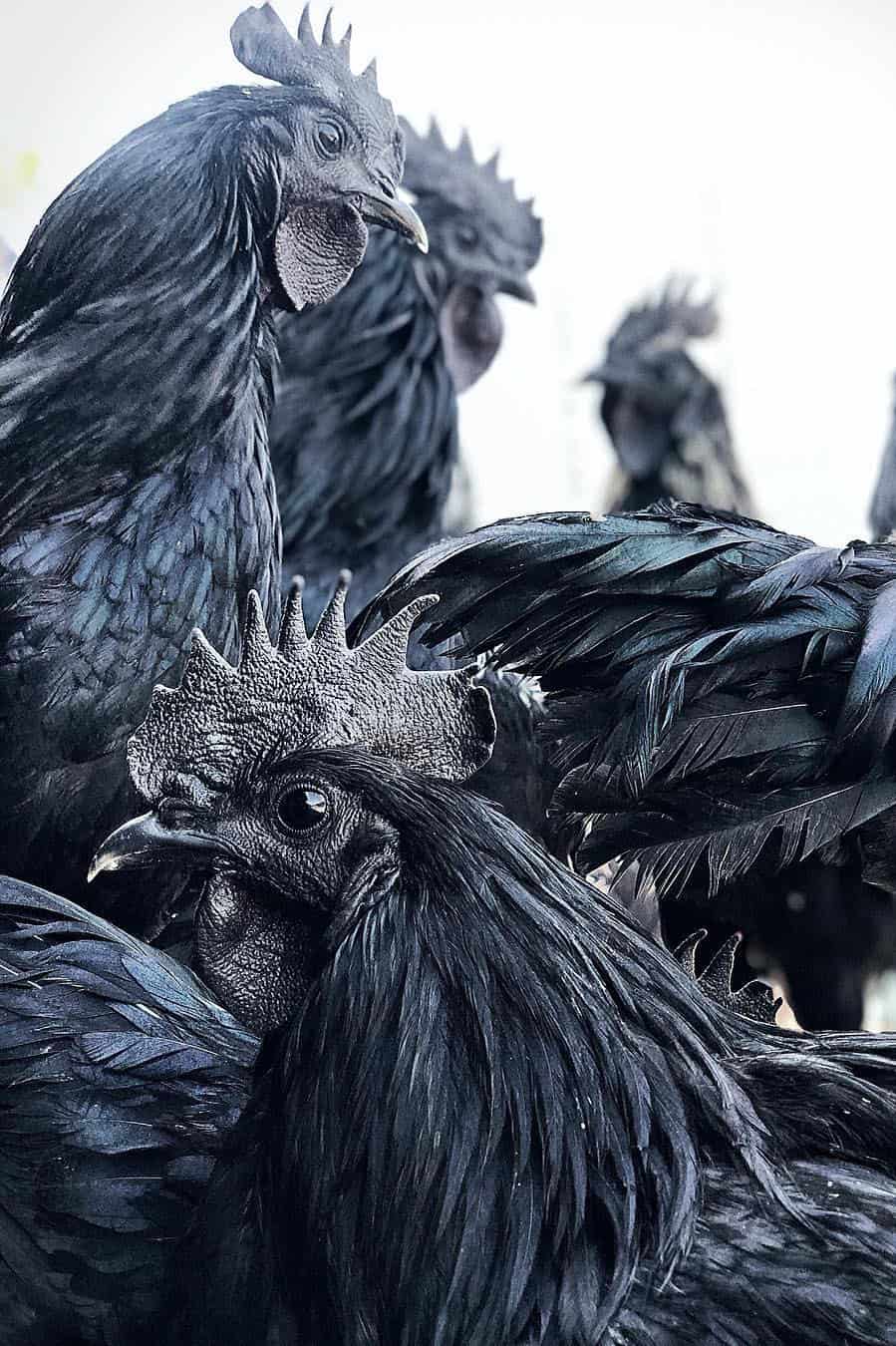
The Kadaknath’s plumage is mostly jet black, although penciled or golden black plumage variations occur. It is renowned for its flexibility and flavorful black meat. Kadaknath’s meat is expensive since it has less cholesterol and fat and more protein.
Additionally, the fowl has therapeutic properties since its flesh is believed to provide vitality. Additionally, Kadaknath’s eggs are an excellent source of nutrients, particularly for the elderly and those suffering from high blood pressure. It is because their eggs have less cholesterol and more amino acids than eggs from other breeds.
The Kadaknath is considered a better option for Broiler chickens due to its flesh’s more excellent nutritional content. Indeed, the bird’s feed conversion ratio is lower, and it can live and flourish on kitchen trash, in addition to being disease resistant.
Although Kadaknath chickens produce creamy-brown eggs (80–90 each year), they are poor brooders. Although its egg production is less than ideal for a dual-purpose bird, given the circumstances in which the bird may survive and the advantages it provides, this bird is unquestionably a good option.
Unfortunately, the Kadaknath is compromised at present. Still, conservation efforts are underway in India with the help of local people to save this historic breed.
5. Dong Tao Chicken
Temperament: docile, friendly
Maintenance: medium
Lifespan: 10 years
Price: $2500
Dong Tao Chicken, a Vietnamese breed, will surprise you with its unique appearance. This breed is excellent for meat production, has a distinctive look and the thickest legs of any chicken breed.
Due to their unique look, Dong Tao Chickens have acquired appeal among the Vietnamese. The flesh of Dong Tao chickens is very expensive in many restaurants across Vietnam. Wealthy individuals can only afford meals prepared with Dong Tao chickens.
Dong Tao chickens are a robust breed that is thought of in Vietnam as a royal chicken breed. Vietnamese believe that Dong Tao hens provide their delectable flesh to the mandarins and the royal family.
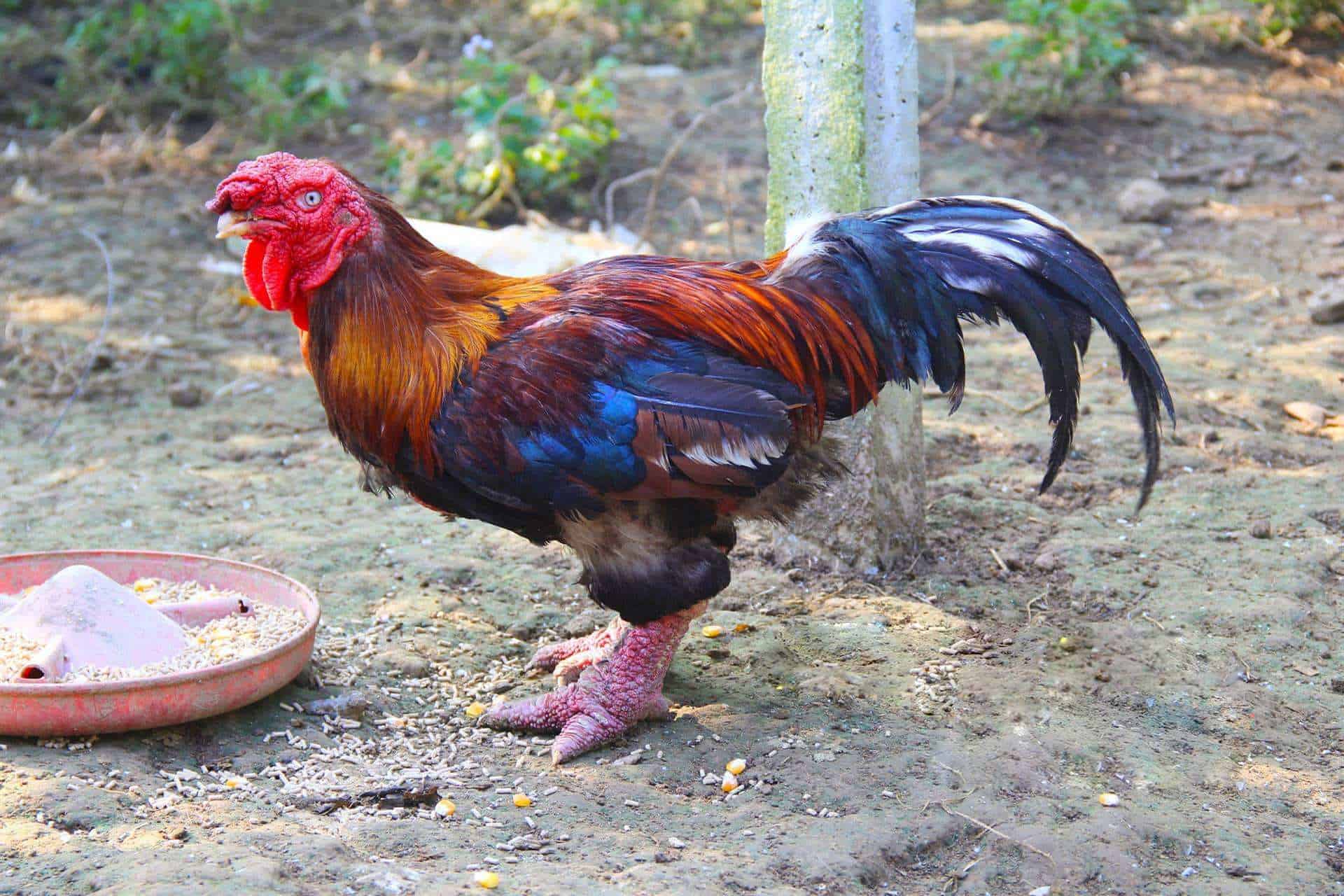
The mandarins gave this breed the name Dong Tao since they served them for many years. A Dong Tao chicken’s leg has a form like a human wrist. Simply put, you cannot take your gaze away from their legs. The legs are the attraction. The legs are shaped identically to those of dragons.
Dong Tao chickens have white hens and multicolored roosters. Due to a limited supply and increased demand, pair of birds costs are very expensive as a couple of Dong Tao chickens cost $2,500.
This breed is widespread in the Dong Tao population. Numerous historians assert that this breed is formed to assist the mandarins and royal family. Numerous chicken producers want to add this breed to their flock, and the price of this breed has increased in recent years.
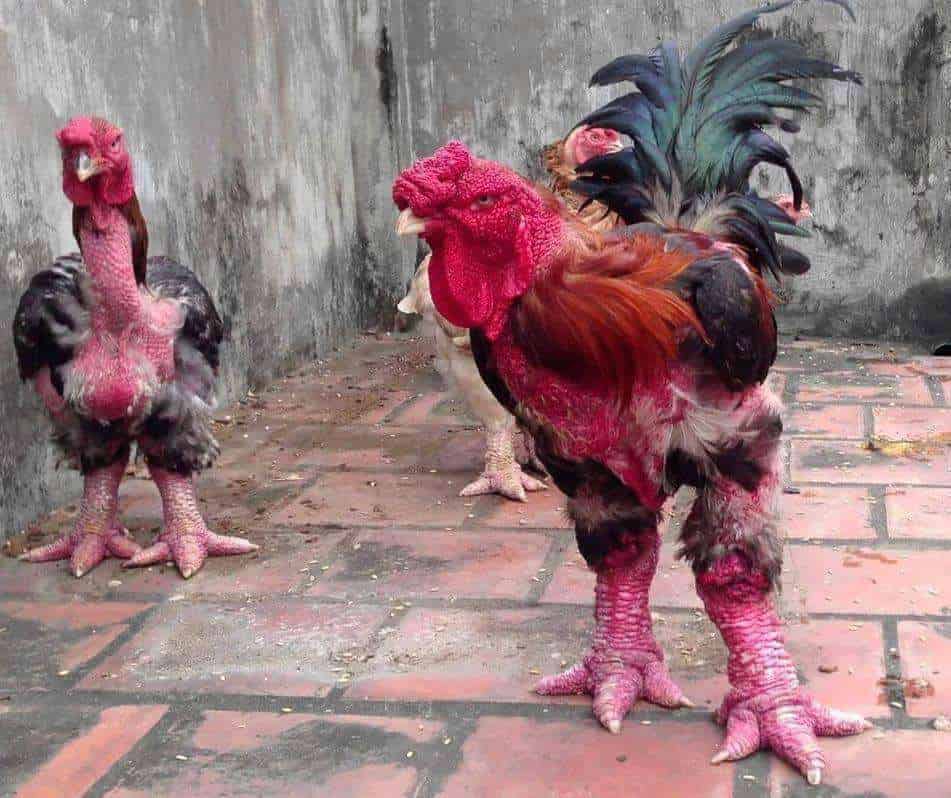
Dong Tao chickens, which are popular in Vietnam, are not an excellent egg-laying choice for breeders. Dong Tao chickens hens may lay up to 60 colored white eggs each year. The quantity is insufficient; therefore, if you’re searching for hens that lay many eggs, check out our list of the finest egg-producing chickens.
Numerous breeders have attempted to provide sufficient nourishment to improve the egg-laying capacity of the hens of Dong Tao chickens. Still, their efforts have been in vain since hens are not particularly well-suited for egg-laying performance.
Changes in the weather have a significant effect on their egg-laying performance. This breed’s hens are not fond of changing climates. That is why breeders seeking a high-quality egg-laying alternative should avoid this breed.
4. Deathlayer
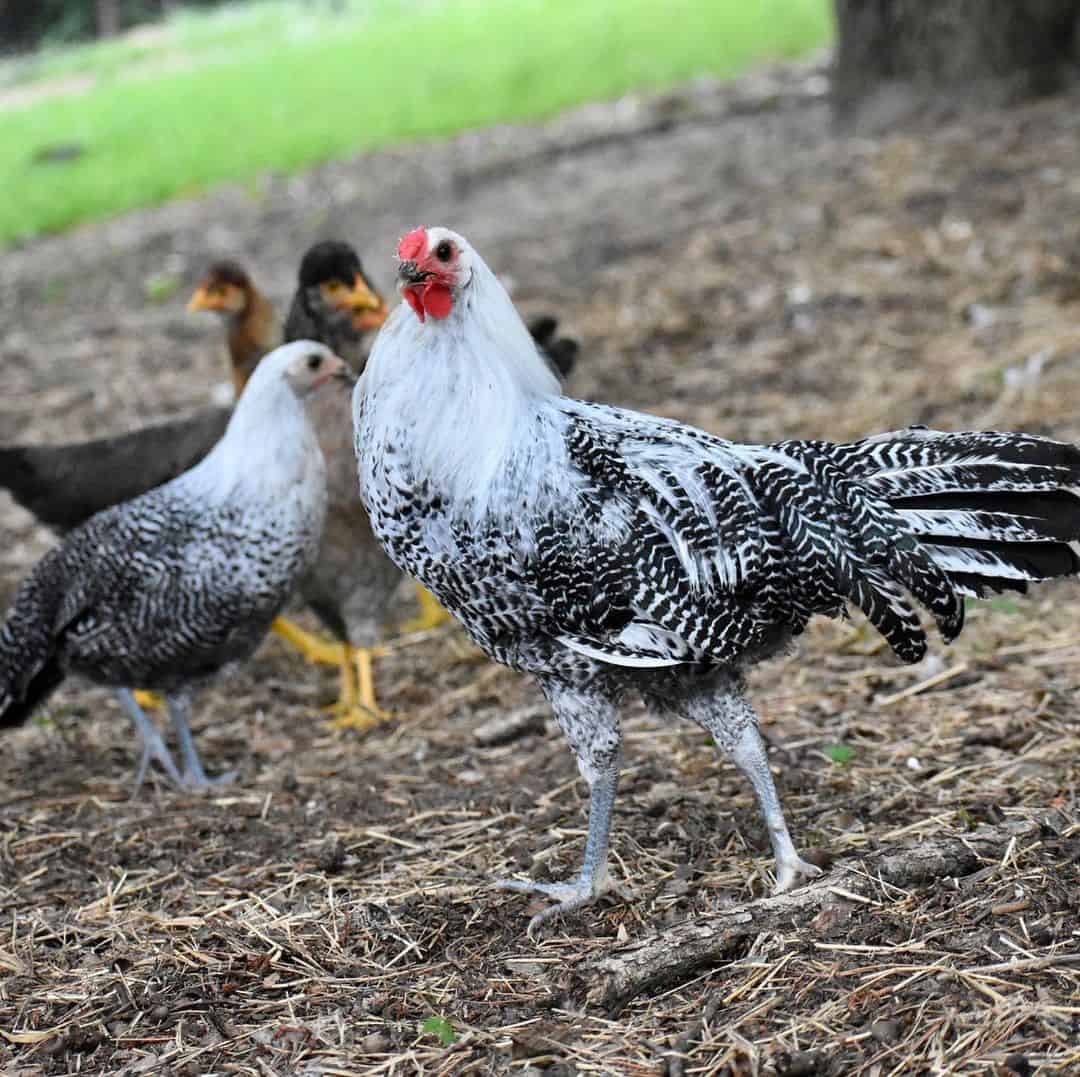
Temperament: docile, needs more human interaction to be friendly
Maintenance: low
Lifespan: 10 to 12 years
Price: $100 per chick
The Deathlayer is an excellent layer. With its dense cushion comb, iridescent greens and purples in its black feathers, luxuriant tail, and utterly black doll eyes, it easily competes with the world’s most attractive chickens.
The Deathlayer seems to have everything: the most fantastic breed name in all of the poultry world, stunning aesthetics, and a more than 400-year heritage in its native Germany. How did it get the title of Deathlayer, a name that screams metal to its root? There are two opposing hypotheses.
Totleger is a direct translation of its German name, which translates as “death layer.” According to one explanation, the name was granted because the hens of this breed are so prolific that they lay one egg every day until they die.

The second hypothesis – less spectacular but possibly more true – is that the species was first reported in low German under a different name (Dauerleger or, technically, “day layer”), which evolved into Totleger through the ages. In any case, what cannot be opposed is that Deathlayers lay a vast number of medium-sized white eggs, and their striking look is comparable to having guest aristocracy in your chicken coop.
Deathlayers are a very energetic and somewhat anxious breed. They appreciate freedom of movement and prefer to roost in trees than an enclosed coop. They do not thrive in confined areas. They are less tamed and therefore need more contact with people at an early age to socialize.
They are a very active free-ranging breed that is certain to become popular with small-scale egg producers and backyard enthusiasts. However, if looks are your primary consideration, it isn’t easy to conceive a more impressive rooster than the Deathlayer.
With its compact cushion comb, iridescent greens and purples in its black feathers, luxuriant tail, and utterly black doll eyes, the Deathlayer easily competes with the world’s most attractive chickens in terms of appearance.
3. Bresse

Temperament: friendly
Maintenance: low
Lifespan: —
Price: €20 to €40
Before you can get too thrilled and go Searching where you can buy your very first coop of Bresses, pause for a moment to consider that the Bresse chicken is not something you can purchase at your local hatchery or even from a specialized breeder.
They are grown mainly in France and are not named Bresse unless they are produced in the Bresse area of France. While American breeders may grow Bresse, they are not imported from France and are called American Bresse. With that stated, American breeders do their best to mimic the habitat and food enjoyed by French Bresses.
Whether you’re wondering how this would affect the French’s attitude toward the treasured bird, they’d probably dismiss the idea that the American Bresse is even a Bresse. Indeed, owing to its hues.
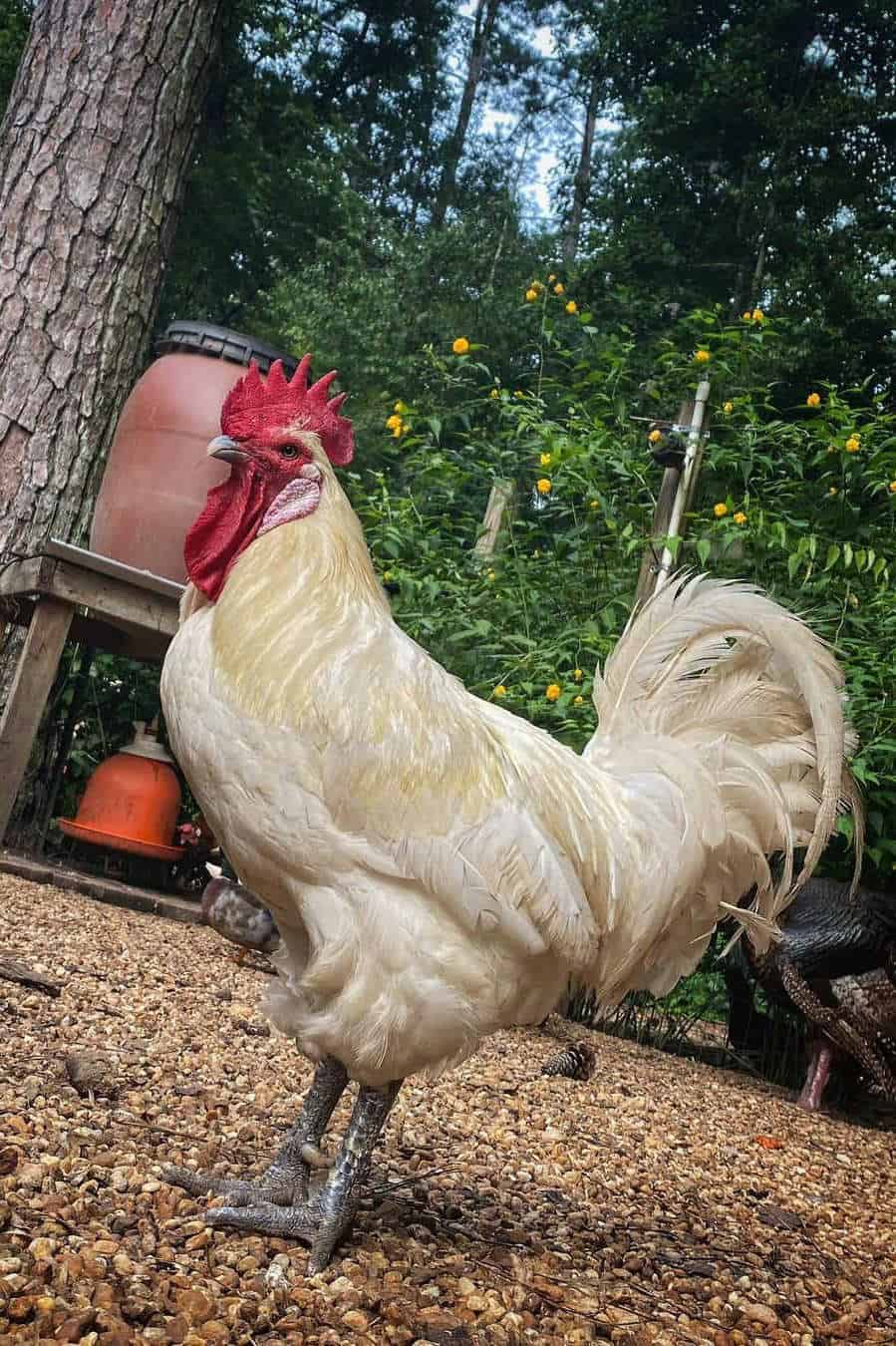
Regardless, breeders in the United States specialize in this very uncommon and delectable bird. Even though the Bresse is new to the area, it had its US debut in 2011! As a result, you can guess that obtaining this meat bird will also cost a meaty amount of money.
Typically, Bresses are white with pristine blue-colored legs and a single comb. However, Bresses are also available in blue, gray, and black. Bresses are considered the world’s most delectable chicken (thus the moniker “Queen of Chickens”).
They are primarily bred for meat production but also lay an average number of medium cream-colored eggs. Their tastebud-exploding flesh, on the other hand, has been sought for ages.
With its light, thin skin and firm but delicious flesh, the taste is unlike commercially produced chicken from the neighborhood grocery shop. It’s the chicken of kings, queens, nobility, and anybody willing to pay a little extra to taste this chicken with a distinct flavor.
2. Brahma
Temperament: friendly
Maintenance: low to medium
Lifespan: 5 to 8 years
Price: $16 to $24
The Brahma is a gigantic chicken, next only to the Jersey Giant in size. They are gentle giants, despite their height and frightening look. They are excellent additions to any flock and can assist the flock in defending itself against lesser predators.
Brahmas are graceful hens with purposeful movement. Until the advent of industrial birds in the 1930s, the Brahma chicken was one of the supreme table birds. Although they fell out of favor with industry, they remained popular with small flock keepers due to their versatility.
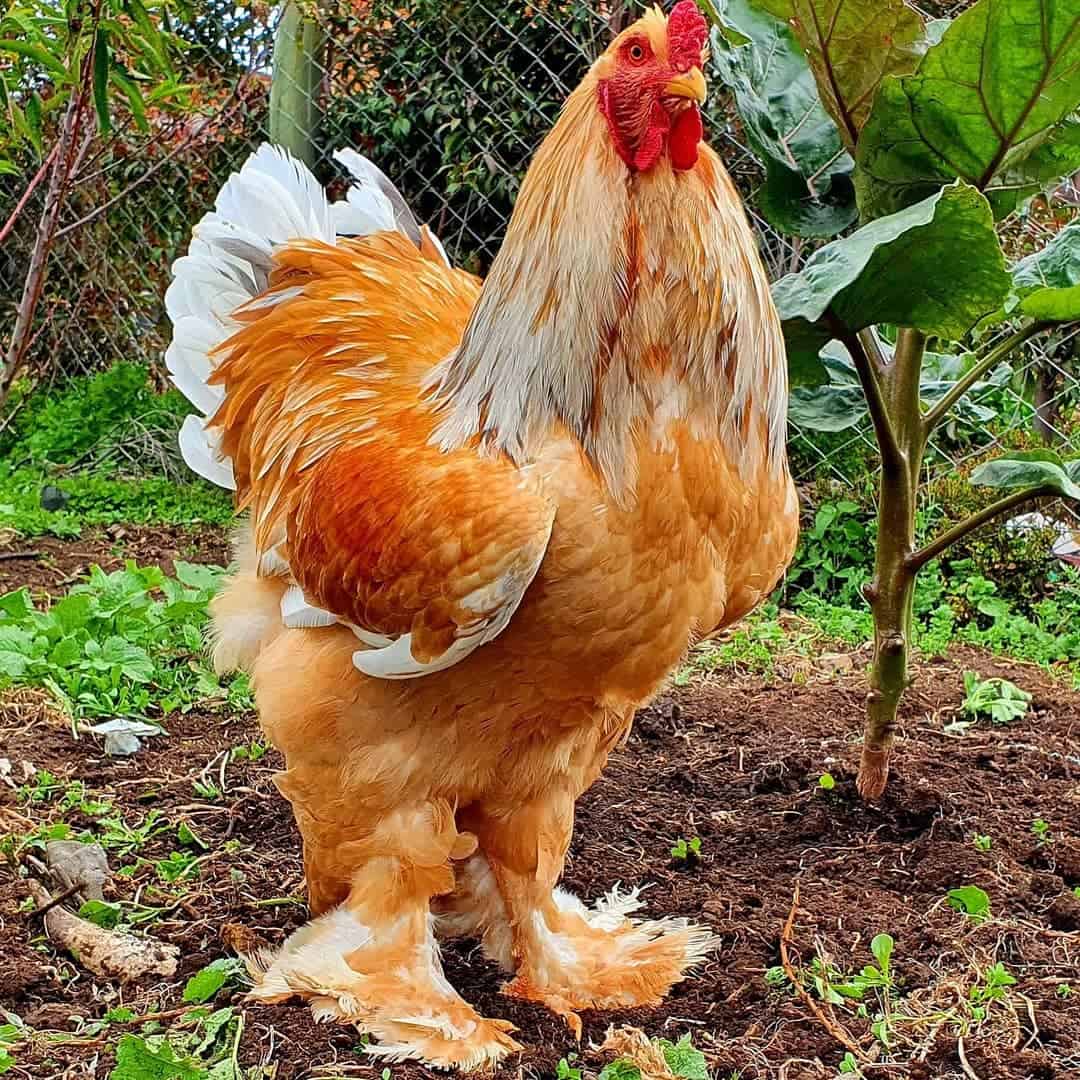
They are one of the giant chicken breeds and have exquisite plumage, which adds to the attractiveness of this unique species. Despite their size, they are a very docile chicken, making them an excellent choice for novices or families. They do well in colder climes and flourish in the northern states, where temperatures may drop to dangerous levels.
Additionally, Brahmas prefer to lay during the colder months. They will lay continuously throughout the winter and then decrease in frequency as spring approaches. It is an excellent time since other breeds will be just beginning to produce eggs. With the increase in popularity of backyard chicken rearing in recent years, this time-honored dish has regained appeal.
The Brahma is a big bird, even though most of its weight consists of feathers. Expect a large, broad, and deep body with solid wings. Despite their strong wings, their weight prevents them from flying very far.
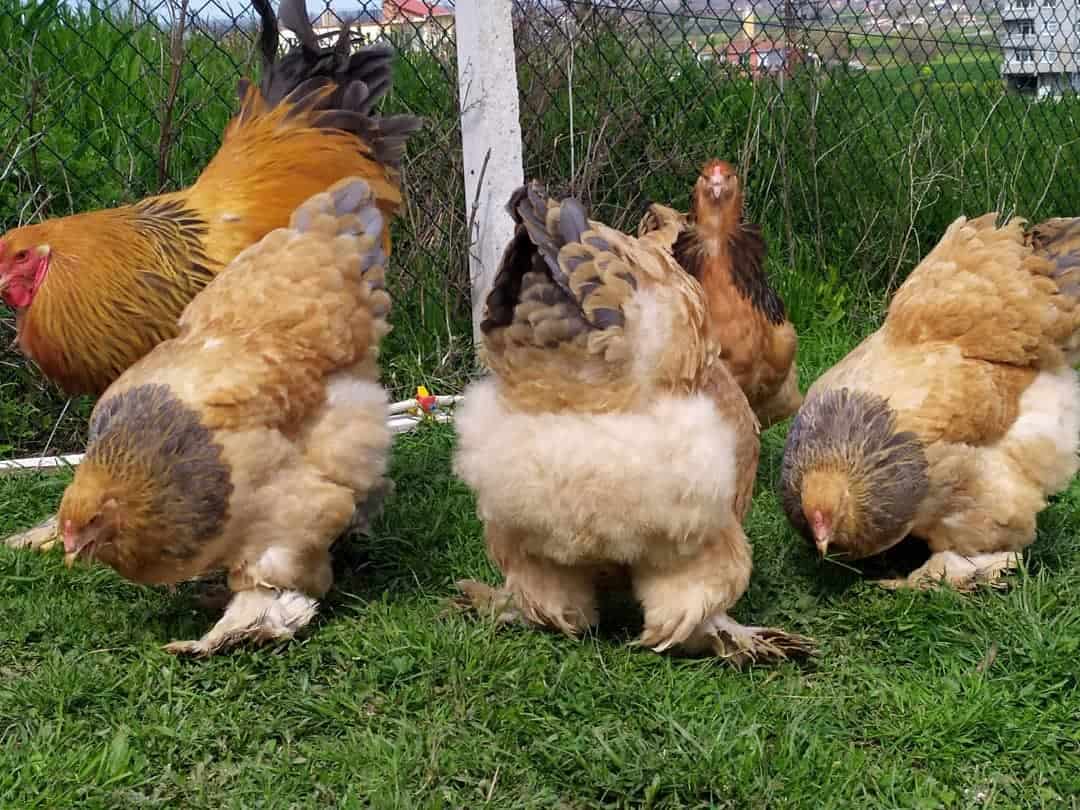
The plumage is consisting feathers that should be grasped firmly together to provide a thick yet fluffy appearance. Their feathering goes all the way down their legs and completely covers their two outer toes. Brahmas have a big head with a somewhat protruding brow, giving the bird an intimidating appearance. Additionally, they possess a tiny comb and a small yet powerful beak.
They may be difficult to exploit sexually. Pullets feather in more quickly in general. The boys’ combs and wattles will get bigger, and they will acquire a more inquisitive temperament. The definite indication is the development of hackle and sickle feathers.
However, this may take up to five months or more. The Brahma is a large bird, reaching a height of about 30 inches. For others, the scale may be overwhelming.
Their mass was very remarkable in the nineteenth century. The modern bird is somewhat smaller than its forefathers; a rooster weighs about 10lb, while hens weigh approximately 8lb. Bantam Brahmas are much smaller, with males weighing about 38 ounces and females somewhat less at 34 ounces.
1. Ayam Cemani
Temperament: docile, friendly, easy to handle
Maintenance: low to medium
Lifespan: 6 to 8 years
Price: $5000 per pair
For generations, the Ayam Cemani, a rare breed of chicken from the Indonesian island of Java, has been treasured for its mystical and sacred properties. Dutch colonists first described it in the area, although it was not introduced to Europe until 1998.
As a consequence, it is considered one of the most “Western” breeds. In the United States, it is challenging to get an Ayam Cemani chicken. However, it is available in Europe in the Netherlands, the Czech Republic, Germany, and Slovakia.
This dark coloring is produced by a rare genetic disease called fibromatosis, which causes excessive pigmentation in hens. This coloring is very uncommon in several other black fowl breeds, like Silkies.
As a consequence, these chickens retail for between $50 and $2500 each bird. Compared to the standard $3 or $4 you would pay for a newborn chick, this is an outrageous amount. Is it thus worthwhile? Yes, if you’re into collecting unusual decorative hens.
If you wish to grow a chicken for commercial reasons or simply for display, you probably should not. Here’s why – and what you should know if you choose to nurture one of these extraordinary birds.

The Ayam Cemani is closely associated with another chicken family known as Kedu, indigenous to Java’s central plains. This bird, a direct descendent of the Ayam Bekisar chicken, exhibits several unusual behavioral characteristics.
The Indonesian term “Ayam” translates as “chicken.” However, the origin of the second part of the name, “Cemani,” is unknown. Some say it relates to the Cemani hamlet, while others believe it refers to the chicken’s hue.
Ayam Bekisar chickens were bred from green junglefowl and tamed red junglefowl. It demands an abundant amount of time and work since several crosses resulted in sterile unions.
In India, this chicken breed is introduced as kadaknath. It is entirely black. We’re not only referring to the feathers here. It is black and contains black flesh, organs, wattles, combs, tongues, beaks, and even bones!
Although the blood is black, it is a typical hue. As with most Kedu chickens, the Ayam Cemani has a distinctive crow that sailors often used as a foghorn on their vessels.
Occasionally considered a landrace bird, the Ayam Cemani is often regarded as a herald of good fortune. Numerous components of this chicken, including the blood, are widely utilized in traditional medicine and religious rituals.
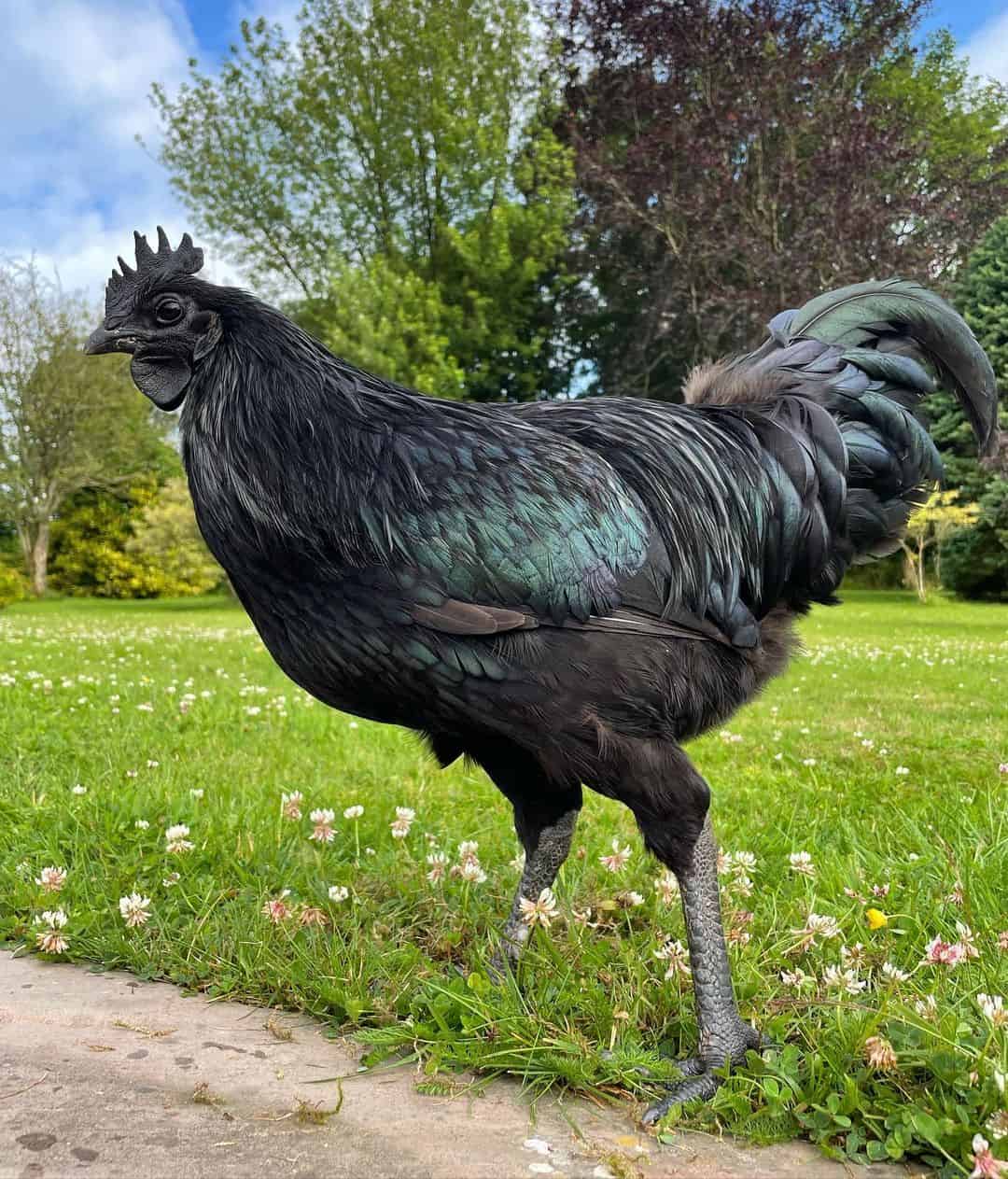
Additionally, since the bird is so uncommon, it is not regarded as an ordinary chicken. It is only gained and retained by people of considerable wealth and social standing. While it is often used in sacrifice rituals, it is seldom devoured. Today, the Ayam Cemani is gone chiefly in Sumatra as an indigenous breed. However, it has been taught in Javanese mythology since the 1100s.
Ayam Cemanis are not renowned for their friendliness, yet that is not to mean they are aloof. On the contrary, these hens are very mild and docile. They are intelligent but also mysterious. They may quickly fly through any barrier you have built due to their small weight and agile nature. You must have procedures in place to contain them.
Apart from that, this chicken breed is pretty minimal maintenance. Despite the chicken’s diminutive stature, they fare well through severe winters. Additionally, they thrive in the heat — which makes sense considering their natural habitat.
The Ayam Cemani is a tiny, uncomplicated bird that is easy to handle. You will need to offer adequate shelter for cold and hot weather, as well as enough shade. Still, your Ayam Cemani is a hardy breed that can withstand almost everything.
Conclusion
Each of these breeds is costly, and chicken owners maintain them for several reasons. Among these factors is the prestige associated with having an expensive chicken. At the same time, some will retain them just for their distinctive appearance. The breeds described before are remarkable. Unsurprisingly, they’re so expensive to acquire and maintain.
Additionally, to being costly, most of these breeds are very uncommon. Only a small number of breeders carry the species, and in the majority of instances, there are lengthy waiting lists. Hopefully, this post informed you a lot about these costly chicken breeds.
Which breed would you join in your flock if you had the money? Was the cost of the chickens much more significant than you anticipated?
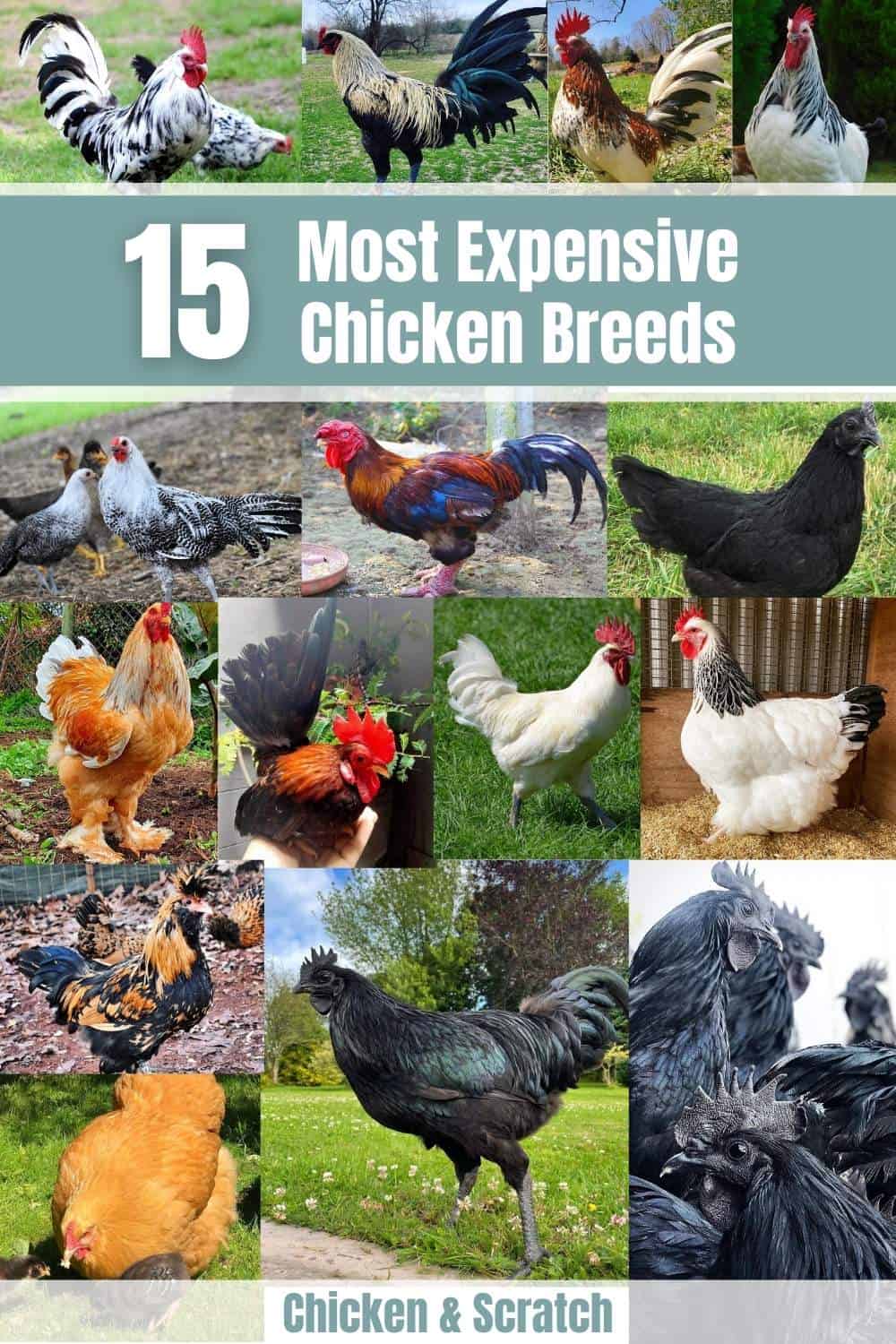

Joseph Hudson has been raising chickens for over 15 years. In 2018, he completed the Agriculture & Natural Resources program at Mt. San Antonio College. He currently raises over 1400 chickens on his 7.5-hectare farm. He keeps sharing his experience on raising healthy and happy chickens on Chicken Scratch The Foundry.







